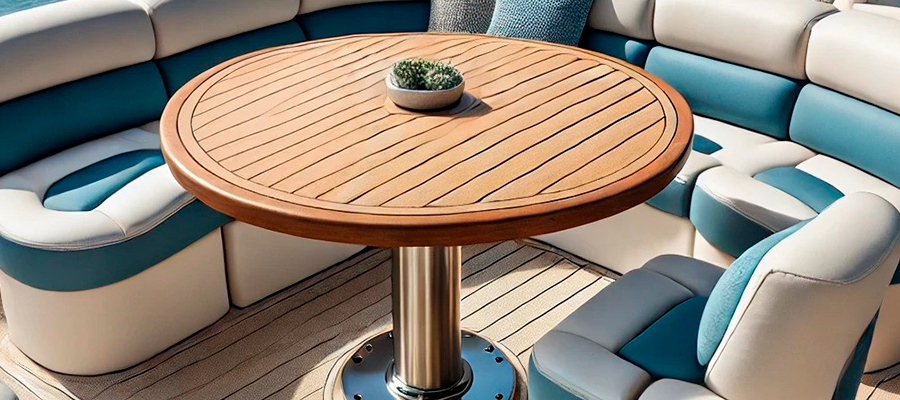
Step 1: Choose the Right Table and Location
Select a marine-grade table designed for boats, ideally with materials resistant to moisture, UV rays, and general wear. Choose a location that offers enough space for seating and movement, and ensure there are no obstructions that could make installation difficult.
Step 2: Gather Necessary Tools and Materials
Before starting, make sure you have the following tools and materials:
- Tabletop and pedestal mount (often included as a kit)
- Marine-grade screws and bolts
- Drill and drill bits
- Measuring tape
- Marine adhesive (optional)
- Wrench or screwdriver
Step 3: Position the Pedestal Base
Place the pedestal base in the chosen location, ensuring that it will be stable and allow easy access to seating. Use measuring tape to center it if needed. If installing over carpet or other soft surfaces, be sure the area is firm enough to support the table without excessive movement.
Step 4: Mark and Drill the Mounting Holes
Using the holes in the pedestal base as a guide, mark the spots where you will drill. Be cautious of any wiring, fuel lines, or structural elements underneath. Drill the holes using a bit that matches the size of your screws or bolts. Ensure each hole is clean for secure mounting.
Step 5: Attach the Pedestal Base
Align the pedestal base over the drilled holes and attach it using marine-grade screws or bolts. Tighten each screw gradually, going around the base to ensure even pressure and stability. If additional reinforcement is needed, consider applying marine adhesive to the base before placing it for added security.
Step 6: Mount the Tabletop
Attach the table pole or pedestal post into the base, then place the tabletop onto the pole according to the manufacturer’s instructions. Some models use a locking mechanism, while others may require additional bolts. Ensure the table is level and secure before use.
Step 7: Test Stability
Once installed, test the table’s stability by applying light pressure to the edges. If there is any wobbling, double-check all bolts and screws to ensure they are tight. Adjust as necessary for a secure fit that can withstand movement and weight.
How To Install Table on Pontoon Boat: Additional Tips
- Consider Removable Options: Many pontoon boat tables come with removable pedestals, allowing you to easily take the table down when not in use.
- Use Rust-Resistant Hardware: Marine-grade stainless steel or aluminum screws will help prevent rust and ensure long-lasting durability.
- Opt for an Adjustable Pedestal: Some tables feature adjustable pedestals, allowing you to change the table’s height based on your needs.
- Cover When Not in Use: To protect your table from the elements, consider covering it or storing it when the boat is not in use.
Common Mistakes to Avoid
- Improper Placement: Avoid placing the table in high-traffic areas where it could cause accidents or block pathways.
- Using Non-Marine-Grade Materials: Standard hardware is not designed to withstand marine environments and may rust or weaken over time.
- Skipping Sealant: For extra stability and waterproofing, marine adhesive is recommended when installing the base.
By following these steps, you can install a table on your pontoon boat with ease, providing a functional, stylish addition for all your boating adventures. A sturdy and properly placed table adds convenience and comfort, making your time on the water even more enjoyable.
